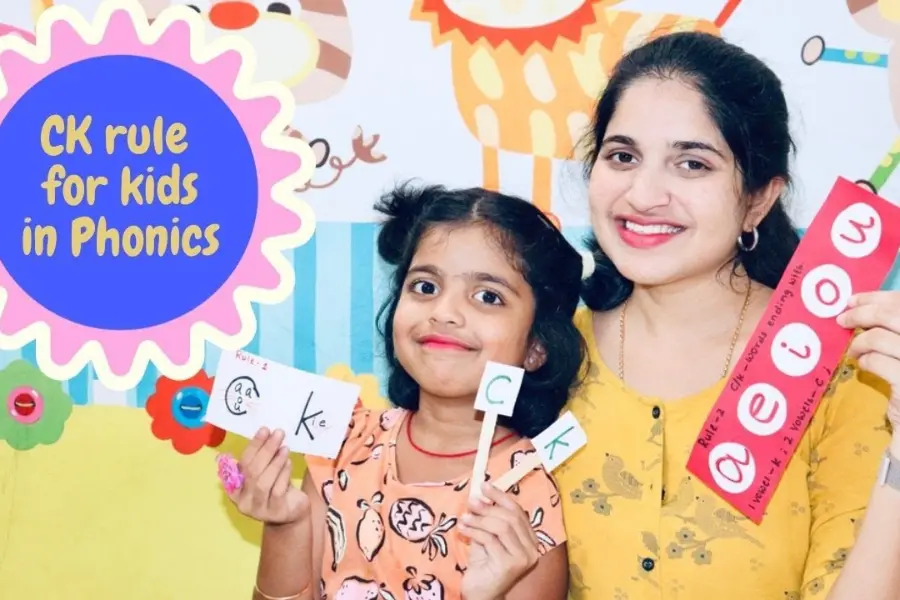
Source: istock
Teaching phonics in the correct order helps develop a strong foundation in reading. With the correct Order of Teaching Phonics children can grasp the basic sounds before moving on to more intricate combinations. Educators can help students advance the skills needed to decode words by following the right Order of Teaching Phonics, thus improving their reading fluency and confidence. This organized method is crucial for helping young learners flourish in their early literacy journey.
Building the Foundation
The phonics instruction journey begins with introducing the common letter sounds. Building the Foundation of the English language, these sounds help children master phonics early on. Begin with basic sounds, such as /a/, /b/, /c/, etc. Phonics helps children identify and pronounce these sounds correctly, thus equipping them with the tools to decipher words independently. Building the Foundation for all future phonics learning is a critical initial step.
Simple Beginnings
After children develop a strong grasp of individual letter sounds, the next logical step is to acquaint them with blending and segmenting. Blending involves merging individual sounds to form words, while segmenting is splitting down words into their constituent sounds. Begin with simple 2 and 3-letter words like ‘it,’ ‘dog,’ ‘sun’ etc. These Simple Beginnings help children understand how sounds come together to create some sense. It’s an essential skill that is at the core of reading and spelling.
For more details of Phonics Course Call / Whatsapp +919869866277/+919869546913
To Download Brochure of Phonics Course, Click Here!

Source: learn
First Steps in Reading
After becoming proficient at blending and segmenting easy words, it’s time to shift the focus to reading sentences composed of these words. These First Steps in Reading are crucial in the Order of Teaching Phonics because they permit children to see how words interrelate in a sentence. Reading simple sentences like ‘The cat sat’, ‘The dog ran,’ etc. helps children utilize their phonics understanding meaningfully in context. These First Steps in Reading also boost their confidence as they realize they can independently read and comprehend entire sentences.
Advancing Skills with Diagraph Sounds
As children become used to basic words, familiarize them with digraphs—blends of two letters producing a single sound, such as ‘sh,’ ‘ch,’ ‘th,’ etc. Advancing Skills with Diagraph Sounds is an important progression in the Order of Teaching Phonics because it expands the children’s range of reading. For instance, once they are familiar with ‘ch,’ they can spontaneously read words like ‘chat,’ ‘chip,’ ‘chase,’ etc. Digraphs are a bit more challenging, Advancing Skills with Diagraph Sounds by providing plenty of practice helps children solidify their understanding.
Growing Vocabulary
With digraphs under their belt, children are equipped to tackle longer words. The next step is to practice blending and segmenting simple 4 to 5-letter words, such as “frog,” “train,” and “plant.” This step not only builds on their existing skills but also introduces more complex word structures. The ability to handle longer words is essential as it prepares children for more advanced reading tasks. Growing Vocabulary with a variety of word practice ensures they become proficient.
Reading Longer Sentences
As their vocabulary grows, children should begin reading sentences that include 4 and 5-letter words. This step in the Order of Teaching Phonics is critical for developing fluency. Reading Longer Sentences like ‘The frog jumps’ or ‘The plant grows’ helps children practice reading lengthier phrases and understanding more intricate ideas. Providing a variety of sentences helps reinforce different word patterns and keeps the practice engaging.
Tackling New Challenges
Once children have mastered longer words, it’s significant to review digraphs when blending and segmenting. Now, the focus is on words with digraphs like “ship,” “chin,” or “thick.” Blending and segmenting these words helps children Tackling New Challenges by giving them a better understanding of how digraphs fit into bigger words. This practice is important because it helps them move from basic phonics to more advanced skills.

Source: youtube
Mastering the Rules
Phonic Rules are the guidelines that direct how sounds are denoted in writing. For instance, teaching the silent ‘e’ rule (as in ‘cute’ or ‘bike’) or the difference between hard and soft ‘c’ (as in ‘cot’ vs. ‘city’) helps children decipher new words. Mastering the Rules empowers children to approach unfamiliar words with confidence, knowing they have a toolkit of approaches to figure them out. This step of Mastering the Rules in the Order of Teaching Phonics is about giving children the knowledge to decode words independently.
Blending and Segmenting More Complex Words
As children’s phonics skills mature, they should start Blending and Segmenting More Complex Words that involve a combination of digraphs, trigraphs, and longer letter sequences. Words like ‘spring,’ ‘bright,’ ‘crown,’ etc. provide a greater challenge and involve more advanced blending and segmenting skills. This step is critical for preparing children to read more sophisticated material. Encourage lots of practice with these words to help children gain confidence.
Tricky Words
Tricky Words (also called sight words) are words that fail to follow usual phonetic rules and must be memorized. Examples include ‘the,’ ‘one,’ ‘said,’ etc. Due to the frequent appearance of these words in reading, children need to identify them instantaneously. Teaching Tricky Words is a vital step in phonics learning, as it empowers children to read more effortlessly and with fewer pauses. Using flashcards and regular repetition can be particularly helpful in mastering these Tricky Words.
Advanced Sounds
Advanced Sounds like Trigraphs are single sounds made up of three letters (e.g. ‘igh’ in ‘light’ or ‘tch’ in ‘watch’) and they add more intricacy to phonics learning. Teaching these Advanced Sounds helps children read more words, making their reading skills robust. Since Trigraph sounds can be a bit challenging, it’s essential to offer lots of illustrations and practice to help children comprehend them better.
Reading with Confidence
Reading with Confidence is the final step in the Order of Teaching Phonics which involves practicing children reading more intricate sentences and paragraphs. By the final stage of Phonics Teaching, children become more comfortable with a wide array of phonetic elements like digraphs, trigraphs, alternative spellings, etc. They also become familiar with Tricky Words. By reading more complex material children can apply everything they’ve learned, thus building their confidence as independent readers. Encourage regular practice with increasingly challenging texts to solidify their skills.

Source: multilit
Phonics Teacher Training Course
The Phonics Teacher Training Course equips educators with the aids and understanding to teach phonics effectively, with modern strategies and practices. This Phonics Teacher Training Course is particularly treasured by those desiring to master the Order of Teaching Phonics- a critical framework that guides the stepwise teaching of phonics to young learners.
Vidhyanidhi Education Society (Govt. Regd.) offers a complete Phonics Teacher Training Course that covers all aspects of phonics instruction and trains teachers to guide students through the vital stages of phonics learning.
Highpoints of the Phonics Teacher Training Course:
Learning the Order of Teaching Phonics
Learn the methodical approach to teaching phonics to ensure that each child advances smoothly through the phonics learning phase.
Interactive Learning
Interactive segments like practical exercises and activities make phonics learning both entertaining and effective.
Blending and Segmenting Skills
Master the approaches to teaching children how to blend sounds and segment words.
Digraphs and Trigraphs
Learn to teach more intricate phonic elements like digraphs and trigraphs.
Teaching Tricky Words
Acquire strategies for helping students identify and remember words that don’t follow usual phonetic rules.
Practical Teaching Skill
Gain hands-on practice with real classroom set-ups, polishing you to implement phonics instruction effectively.
Enrolling in the Phonics Teacher Training Course offered by Vidhyanidhi Education Society (Govt. Regd.) helps educators in Understanding the Order of Teaching Phonics and gain the confidence to make a significant impact on their students’ reading abilities, thus ensuring that every child can attain literacy success.
Join Vidhyanidhi Education Society’s Phonic Course and shape young readers today!
For more details of Phonics Course Call / Whatsapp +919869866277/+919869546913
To Download Brochure of Phonics Course, Click Here!
FAQs
Which is the best Phonics Certificate Course for Teachers?
The Phonics Teacher Training Course by Vidhyanidhi Education Society is one of the best, presenting all-inclusive training for active phonics instruction.
What is the Salary of Phonics Teacher in India?
The salary of a phonics teacher in India varies based on skills, location, and institute but generally offers competitive rewards in the education sector.
How can I start Phonics Classes for Kids?
To start phonics classes for kids, complete a certified course to gain phonics teaching skills, plan engaging lessons, and use interactive teaching tools.



